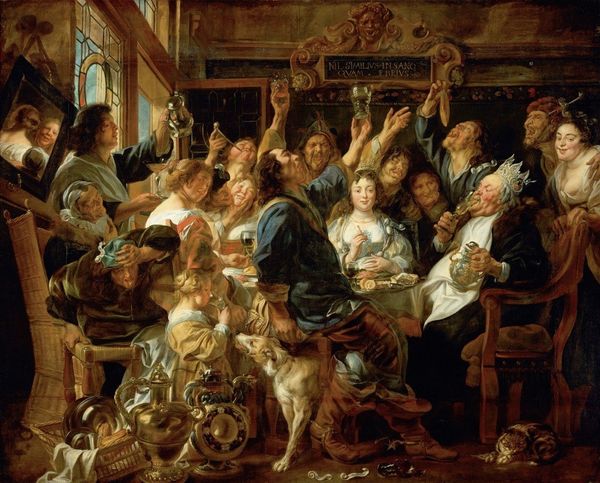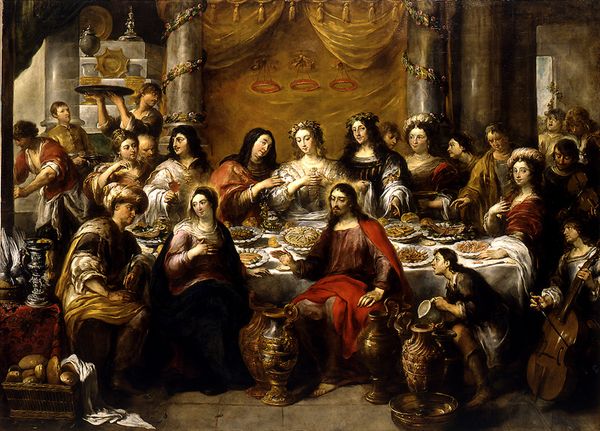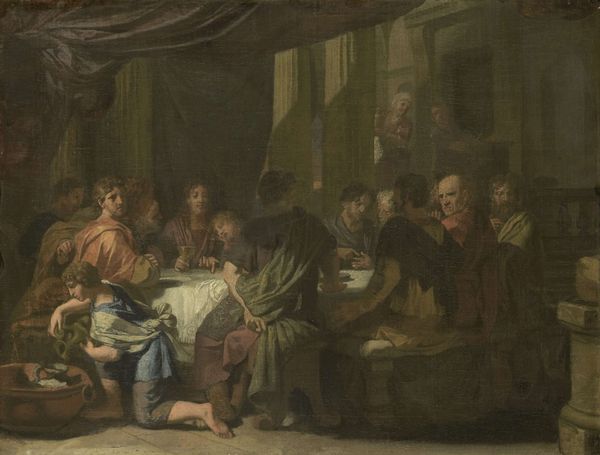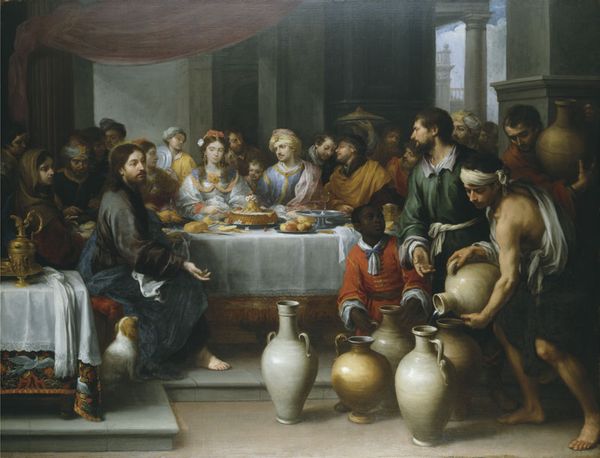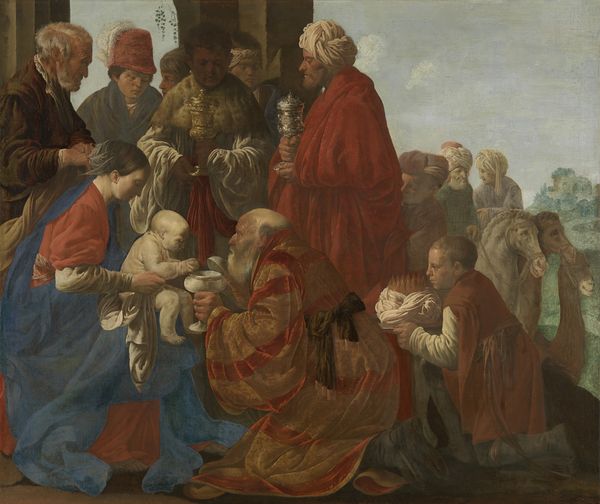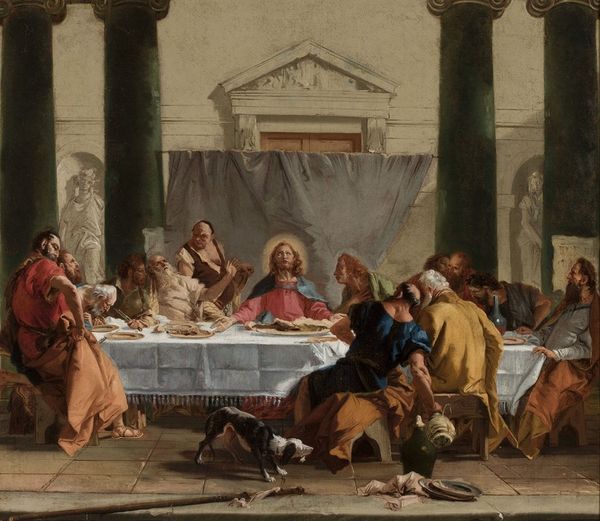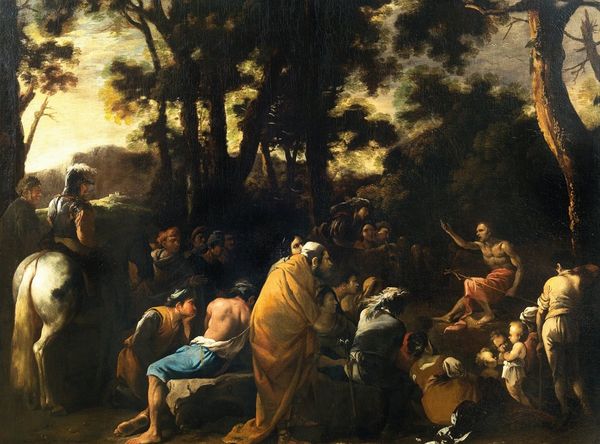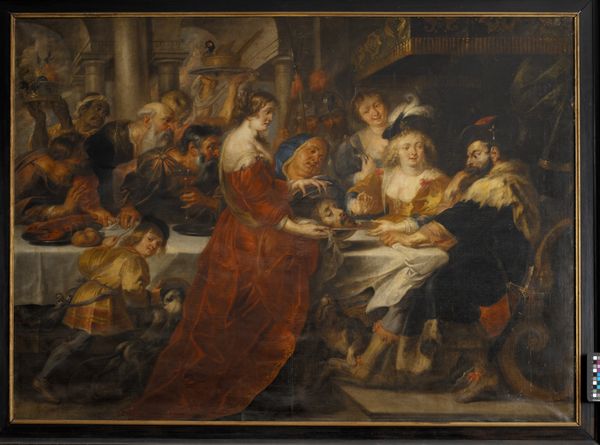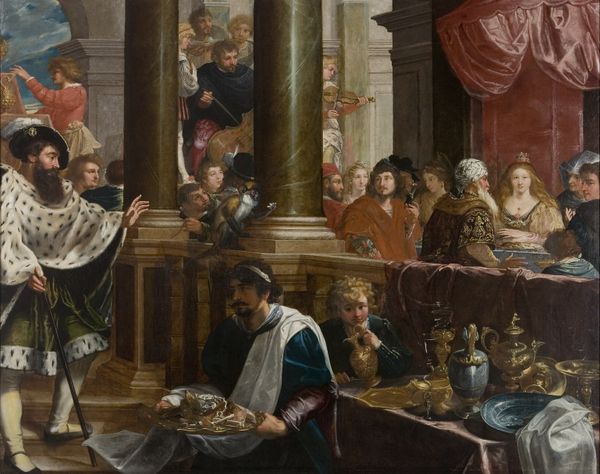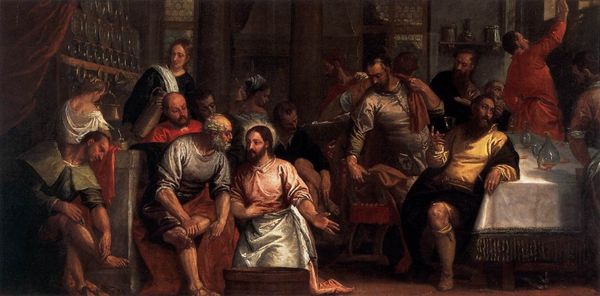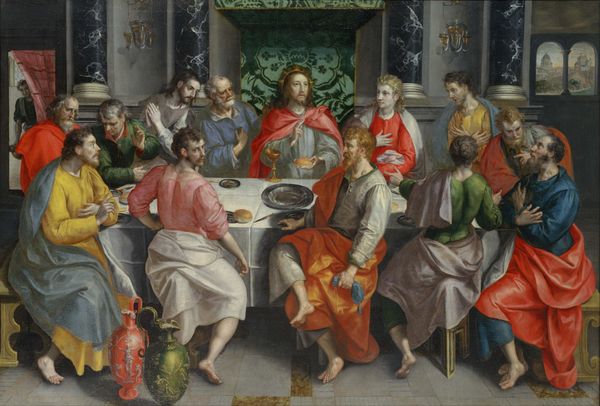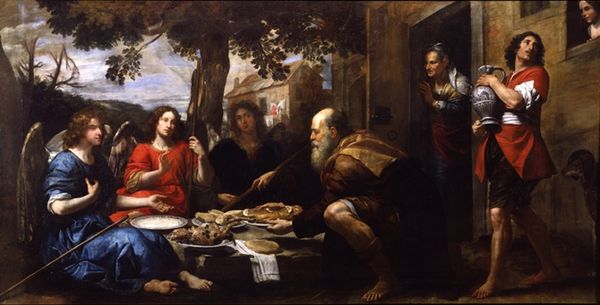
oil-paint
#
baroque
#
oil-paint
#
figuration
#
group-portraits
#
genre-painting
#
history-painting
#
realism
Copyright: Public Domain: Artvee
Curator: We're looking at Peter Paul Rubens' "The Last Supper" painted sometime between 1654 and 1655, rendered in oil paint. It's a compelling scene, wouldn’t you agree? Editor: My first impression is one of lavishness, but also discomfort. There's a density to the scene, a crowding…and what about this prominent water jug on the left, stealing space from the sacred figures? Curator: The drama, theatrics, and intense emotion displayed are quite typical of Baroque art from the time. Think of the Counter-Reformation influence, visually reinforcing the importance of the Eucharist. Editor: Sure, but beyond that, what was involved in the material process? Rubens’ workshop certainly played a role here. Oil paint allows for layering and richness, but how much was Rubens hands-on versus assistants prepping canvases and grinding pigments? What sources provided these expensive, rich pigments? Curator: It’s fascinating to consider how artistic production mirrors societal structures. Here, Rubens likely had workshop assistants fulfilling roles much like an early assembly line to complete this piece, playing to his public as the great master, and in turn solidifying his place as an essential figure in religious painting of the time. Editor: The red drapery dominates the top of the canvas. Who wove those textiles, dyed them? Were they purchased, bartered for, or gifts? Each color and piece represents value and the means of acquisition and representation for a culture eager for excess, especially religious iconography. Curator: Indeed, the symbolism is crucial. This is an idealized and carefully curated moment, aiming to elicit an emotional response from the viewer, drawing them into the heart of the narrative as much as possible. Editor: It does highlight how art becomes a product, a symbol of status as much as an expression of devotion. Looking beyond Jesus himself to see the making of such complex painting allows a window into a wider society and the economics that shaped cultural aesthetics and values. Curator: Seeing Rubens’ vision through that lens is definitely enlightening and something our visitors can consider. Editor: A painting is much more than brushstrokes on a canvas, really. Thanks for providing a wider frame on this magnificent, intense, Baroque painting.
Comments
No comments
Be the first to comment and join the conversation on the ultimate creative platform.
